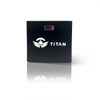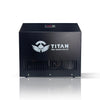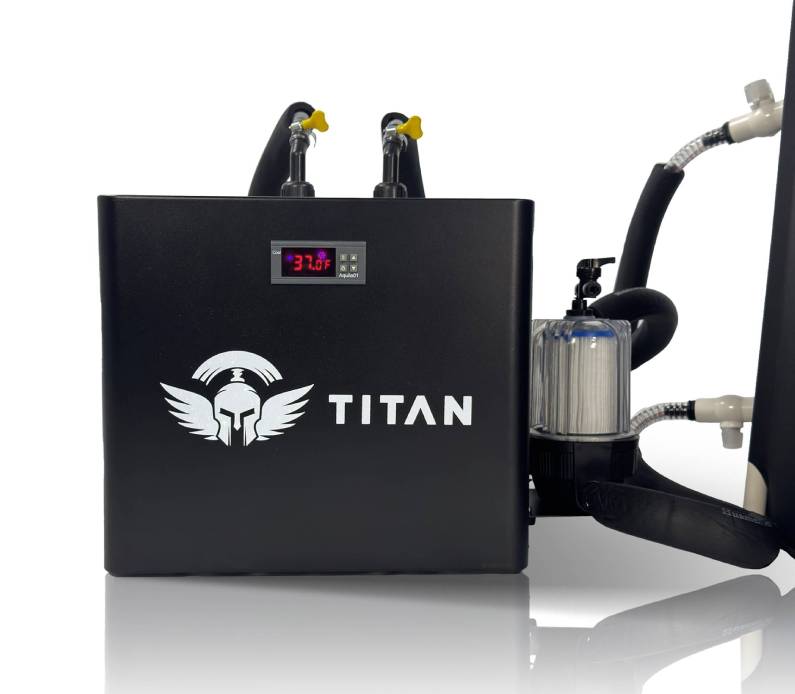Top athletes are always looking for new ways to get better and recover faster. One method they're trying is ice baths. They soak in cold water to help their muscles heal and feel new again.
Many elite U.S. athletes swear by ice baths. They say it helps reduce swelling, improves blood flow, and boosts their overall health. Using ice baths helps them train harder and stay ahead in competitions.
This article will look at five top U.S. athletes who use ice baths for recovery. We'll see how it has helped them and how it's changed their game.
The Science Behind Ice Bath for Recovery
Ice baths are key for many top athletes' recovery. They immerse their bodies in cold water, usually between 50°F and 55°F, for a while. This cold water triggers responses that help with recovery.
How Cold Exposure Affects the Body
Cold water makes blood vessels narrow, cutting off blood flow to muscles. This stops the release of substances that cause pain and swelling. When they get out, blood vessels open up, bringing more oxygen to muscles.
This is called vasoconstriction and vasodilation. It helps lessen muscle pain and swelling. Dr. Mark Harper, a sports medicine expert, says, "Cold water immersion is a simple yet effective way to enhance recovery by manipulating the body's physiological response to cold stress."
Research-Backed Benefits for Athletes
Studies show cold plunge therapy benefits athletes a lot. It reduces muscle soreness, speeds up recovery, and boosts performance. A study in the
"Journal of Strength and Conditioning Research"
showed athletes who used cold water immersion recovered better than those who didn't. Adding cold plunge to their routine can give athletes an edge and keep them at their best.

LeBron James: NBA Superstar's Cold Water Commitment
LeBron James spends $1.5 million a year on keeping his body in top shape. This includes regular ice baths. His dedication to recovery is as crucial as his hard training.
His $1.5 Million Annual Body Maintenance Program
LeBron's yearly program is all about staying in the game longer. It includes many treatments, with ice baths being key. His trainer, Mike Mancias, says ice baths help reduce swelling and speed up muscle recovery.
Key components of LeBron's recovery program include:
- Cryotherapy
- Physical therapy sessions
- Personalized nutrition planning
- Regular ice baths
Mike Mancias talked about the importance of recovery:
"Recovery is a huge part of the program... it's not just about the training, it's about how you recover."
Hotel Ice Baths: Recovery on the Road
Even on the road, LeBron's recovery doesn't stop. His team sets up ice baths in hotel rooms. They fill a tub with ice and cold water for an on-the-spot ice bath.
| LeBron's commitment to recovery shows he's one of the most dedicated athletes. His use of ice baths is a big part of his routine. |
Stephen Curry: Morning Cold Plunges for Basketball Longevity
Stephen Curry starts his day with a cold plunge. He credits this habit for his lasting basketball success. At 37, Curry remains a top NBA player, thanks to recovery techniques like cold therapy.
"I'm a big believer in the benefits of cold water immersion," Curry has said in interviews. "It's something that helps me recover from the rigors of the NBA season."
Daily Backyard Cold Immersion Routine at Age 37
Curry's daily routine includes a backyard cold plunge. This practice has been part of his morning for a while. Cold water has many benefits, like reducing inflammation and improving circulation.
By starting his day with cold water, Curry recovers faster. He gets ready for the day's challenges.
Combining Cold Therapy with Compression for Peak Performance
Curry also uses compression sleeves in his recovery. Cold therapy and compression together help him stay at his best. This combo is key to his success in the NBA season.
Key Benefits of Cold Therapy and Compression:
- Reduced Muscle Soreness: Cold water reduces muscle inflammation.
- Improved Recovery: Compression sleeves help improve blood flow.
- Enhanced Performance: Together, they help athletes like Curry perform at their best.
As Curry noted, "It's all about finding ways to recover and stay healthy." By using cold therapy and compression, Curry keeps his performance high. Even at 37, he's still going strong.
Simone Biles: Gymnastics Champion's Recovery Protocol
Simone Biles is a top gymnast who knows how key recovery is. She uses ice baths to help her body heal after long days of training. Her routine helps her stay at the top of her game and keeps inflammation down.
Her daily routine shows her dedication to recovery. She takes post-practice ice baths to recover from gymnastics' tough demands.
Managing Inflammation After Six-Hour Training Days
After a long training day, Simone Biles uses ice baths to recover. The cold plunge benefits she gets include less muscle inflammation and better physical strength. Ice baths help her keep up the Olympic-level performance she's known for.
- Reduces muscle inflammation
- Improves physical resilience
- Enhances recovery after intense training
Home Cold Tub Installation for Olympic-Level Recovery
Simone Biles also has a home cold tub installation to boost her recovery. This lets her recover at home, not just at the gym. Having her own cold tub means she can stick to her recovery plan, even on the toughest days.
Her ice bath routine, along with her intense training, has been key to her success in gymnastics.

What We Can Learn From These Athletes Cold Plunge Practices
Elite athletes like LeBron James, Stephen Curry, and Simone Biles show the power of ice baths and cold plunges. They use these methods to recover faster and feel better. By doing the same, we can all improve our health and performance.
These athletes prove that cold water immersion is a game-changer. But it's not just for pros. Anyone who exercises regularly can benefit from cold plunges. It's a simple way to boost your fitness and health.
Trying an ice bath or cold plunge can be a game-changer for you. It's a simple yet powerful recovery method. Adding it to your fitness routine can help prevent injuries and keep you healthy for the long term.


 30-Day Hassle-Free Returns
30-Day Hassle-Free Returns






